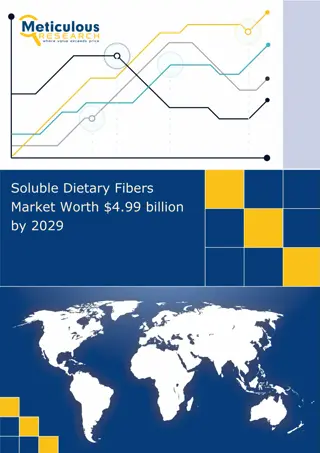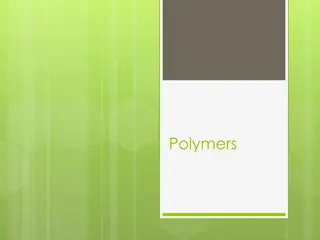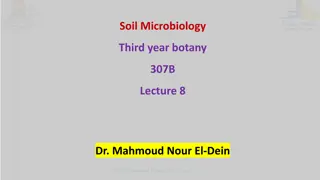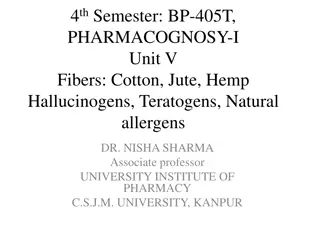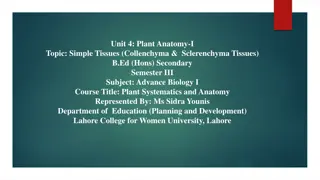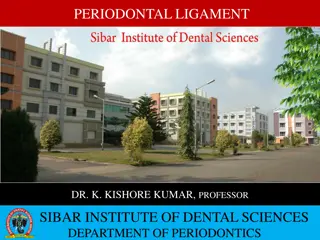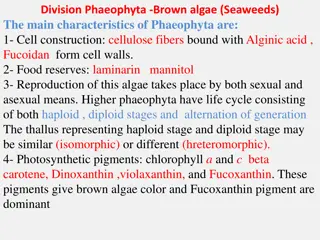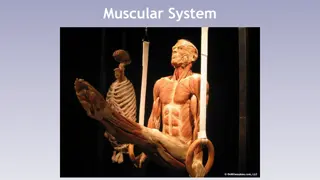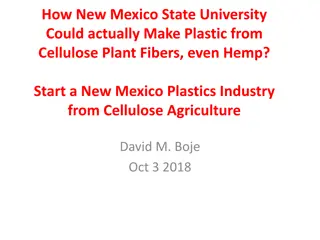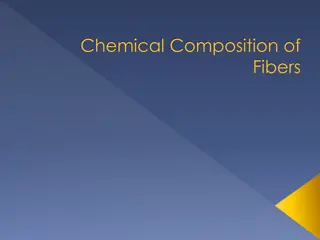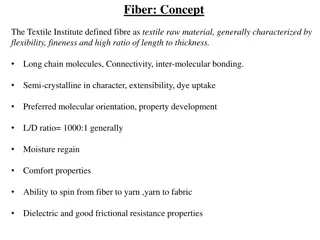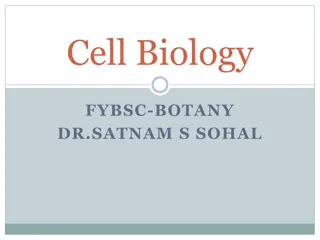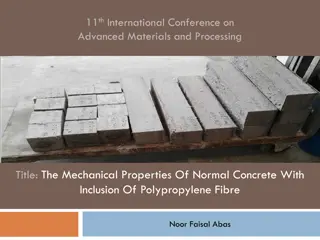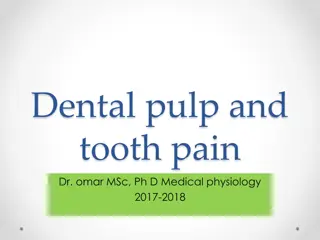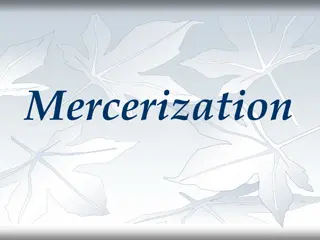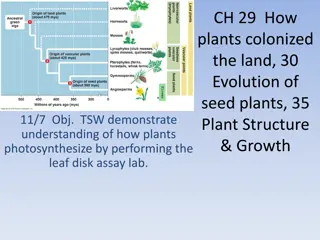SMALL FIBRE
Small fiber neuropathy involves thin and unmyelinated nerve fibers, leading to various sensory disturbances. The Erlanger and Gasser classification details the different types of nerve fibers involved. Symptoms include burning, tingling, and numbness, often presenting in a stocking-glove pattern. Di
4 views • 53 slides
Soluble Dietary Fibers Market Worth $4.99 billion by 2029
Nation-wide lockdowns in some regions have impacted the transportation of raw materials from suppliers. The temporary closures of manufacturing bases due to indefinite lockdowns and temporary quarantines impacted the growth of the soluble dietary fibers market during the pandemic.
0 views • 3 slides
Nerve and muscle physiology
The lecture delves into the intricate structure of nerves, highlighting the morphology of nerve fibers and the process of myelination. It explores the classification of nerve fibers, emphasizing the role of dendrites, axons, and synaptic functions in the nervous system. The significance of Schwann c
4 views • 29 slides
Understanding Polymers and Their Properties
Polymers are long chains of repeating monomers, with both natural and synthetic varieties. Natural polymers include silk, cellulose, and DNA, while synthetic ones encompass plastics, fibers, and elastomers. The properties of polymers, such as molar mass and monomer structure, determine their functio
0 views • 15 slides
Understanding Composition of Soil Organic Matter in Soil Microbiology
Soil organic matter is vital for soil properties and plant nutrition. It consists of plant residues, animal remains, and microbial tissues, comprising complex compounds like carbohydrates, proteins, fats, and more. The composition varies with plant type, age, and nature. Leguminous plants are rich i
0 views • 19 slides
Exploring Fibers: Cotton, Jute, and Hemp - Pharmacognosy Insights
Discover the world of natural fibers such as cotton, jute, and hemp in pharmacognosy. Learn about their biological sources, chemical constituents, uses, and classification based on origin. Delve into the properties and applications of these fibers, alongside insights on hallucinogens and their effec
0 views • 16 slides
Understanding Easy-Care and Durable Press Finishes for Textiles
Easy-care and durable press finishes play a vital role in enhancing the quality and longevity of textiles, particularly those made of cellulose fibers. These finishes reduce shrinkage, improve wrinkle recovery, and maintain fabric appearance. While beneficial, they may impact fiber flexibility and s
0 views • 25 slides
Understanding Plant Tissue Culture Media and Their Importance in In Vitro Growth
Plant tissue culture media play a crucial role in the in vitro growth and morphogenesis of plant tissues. The composition of culture media depends on the specific plant species and the type of material used for culture. Various types of media, such as White's medium, MS medium, B5 medium, N6 medium,
0 views • 6 slides
Understanding Collenchyma and Sclerenchyma Tissues in Plants
Plant tissues play vital roles in providing structural support and protection. Collenchyma tissues are found in shoots and leaves, offering strength and flexibility, while sclerenchyma tissues provide rigid support in non-growing regions. Collenchyma cells have thickened corners for strength and pro
1 views • 8 slides
Understanding the Digestive System of Ruminant Animals
Ruminant animals have a unique digestive system that allows them to efficiently digest cellulose. Their stomach consists of four chambers, each serving a specific function in the digestion process. The breakdown of cellulose by microbes in the rumen produces glucose, which provides energy for the an
0 views • 22 slides
Understanding the Periodontal Ligament in Dental Sciences
The periodontal ligament (PDL) is a vital connective tissue that supports teeth by attaching them to the jaw bone. It consists of various tissues including cementum and alveolar bone, and is rich in vascular and cellular components. The development of PDL fibers plays a crucial role in tooth support
1 views • 39 slides
Understanding Plant Pathology: Importance, Scope, and Objectives
Plant pathology, also known as phytopathology, is the study of plant diseases and their management. It covers the causes, symptoms, and impact of pathogenic organisms on plants. The field aims to understand the interactions between plants and pathogens, develop control methods, and reduce losses in
0 views • 6 slides
Characteristics of Phaeophyta - Brown Algae (Seaweeds)
Phaeophyta, also known as brown algae or seaweeds, exhibit unique characteristics including cellulose fibers with Alginic acid, food reserves like laminarin and mannitol, and a life cycle consisting of both haploid and diploid stages. They possess photosynthetic pigments giving them their brown colo
1 views • 26 slides
Introduction to Plant Physiology: Exploring the Functioning of Plants
Plant physiology is a crucial subdiscipline of botany that delves into the processes and functions operating within plants. This field closely examines areas like plant morphology, ecology, cell biology, and genetics, shedding light on vital processes such as photosynthesis, respiration, and more. T
1 views • 7 slides
Understanding Plant Tissue Culture: Techniques and Applications
Plant tissue culture involves maintaining and growing plant cells, tissues, or organs in artificial mediums under controlled conditions. It allows the regeneration of whole plants from small plant parts or cells. Hormones like auxins, cytokinins, and gibberellins are used in the process. Proper envi
3 views • 5 slides
- "Development of Pavement-Specific Structural Synthetic Fibers - TAP Meeting Insights
- The TAP meeting on the development of pavement-specific structural synthetic fibers held on November 3, 2021, highlighted key benefits of fibers in pavements, such as increased load transfer efficiency and reduced cracking. Various industry partners and experts discussed the participation of fiber
0 views • 42 slides
Plant Tissue Culture Methods for Growth and Reproduction Study
Plant tissue culture methods such as root tip culture, shoot-tip culture, leaf culture, flower culture, and anther and pollen culture allow for the study of growth, reproduction, and genetic variations in plants. These techniques involve culturing various plant parts under sterile conditions to inve
1 views • 20 slides
Understanding Plant Quarantine and Phytosanitary Measures
Plant quarantine involves efforts to prevent the entry, establishment, or spread of foreign pests through legal restrictions on plant and plant product movement. It is crucial for safeguarding plant health, food production, and ecosystems. Phytosanitary measures aim to ensure the health of plants by
0 views • 33 slides
Understanding Mineral Nutrition in Plants
Mineral nutrition in plants involves the acquisition of essential elements in the form of inorganic ions from soil, followed by their absorption and utilization in various plant processes. Around 60 different elements have been reported in plants, with 30 being essential for plant growth. These esse
0 views • 39 slides
Plant Propagation Techniques in Nursery Environment
Learn about plant propagation techniques within a nursery environment, including nursery operations, potting seedlings, plant protection, weed control, packing of nursery plants, and crafting tissues for plant growth. Explore the essential tasks involved in nurturing seedlings and trees before they
0 views • 17 slides
Understanding Starches, Cellulose, Gums, and Pectins in Food
Explore the roles of starches, cellulose, gums, and pectins in the diet. Learn about their structures, functions, and how they affect food texture and properties. Discover how these components bind, thicken, and provide structure in various food preparations.
1 views • 29 slides
Understanding Collenchyma and Sclerenchyma Tissues in Plants
Collenchyma tissue is living cells with irregularly thick walls, providing support in young and old plant organs, while sclerenchyma tissue consists of dead cells with extremely thick lignified walls, offering mechanical support in mature plant parts. Collenchyma can be classified into angular, lame
0 views • 8 slides
Exploring CMF Twist in Cellulose Nanocrystals: Simulations, Experiments, and Implications
Explore the twist phenomenon in cellulose nanocrystals known as CMF through simulations and experimental evidence. Discover how isolated cellulose chains twist, the challenges in visualizing CMF twist, proposed alterations upon drying, and the implications of CMF twist in forming a liquid crystal ph
1 views • 7 slides
Evolution of Optical Fiber Technology
Optical fiber technology has a rich history starting from John Tyndall's demonstrations in 1870 to the development of flexible fiberscopes by Hopkins and Kapany. This technology revolutionized communication systems and medical diagnostics, enabling the transmission of information through thin glass
0 views • 85 slides
Plant Health Initiatives at the 27th Technical Consultation Among Regional Plant Protection Organizations - Memphis, Tennessee
The 27th Technical Consultation in Memphis, Tennessee focused on plant health initiatives by the International Regional Organization for Plant and Animal Health. OIRSA emphasized four key technical areas: plant health, animal health, agricultural quarantine, and food safety. Projects included addres
0 views • 13 slides
Understanding the Muscular System and Its Anatomy
The muscular system is vital for movement, posture maintenance, and organ protection. It consists of skeletal muscles that contract to create movement, circular muscles called sphincters for controlling openings, and muscle fibers arranged in fascicles with collagen layers like epimysium and endomys
0 views • 59 slides
Understanding Vat Dyes: Properties, Dyeing Process, and Limitations
Vat dyes are known for providing excellent color and fastness properties to textile materials, especially natural and manmade fibers. The dyeing process involves steps like aqueous dispersion, vatting, absorption by fibers, re-oxidation, and soaping off to ensure colorfastness. However, there are ce
0 views • 25 slides
Plant Growth Hormones and Defense Mechanisms: Understanding Plant Responses to the Environment
Plant growth hormones and defense mechanisms play crucial roles in how plants respond to environmental stimuli such as water, sunlight, gravity, and more. From auxins promoting cell growth to gibberellins stimulating flowering, this presentation educates on the intricacies of plant hormones and thei
1 views • 13 slides
Revolutionizing Plastics: Making Cellulose-Based Plastic from Hemp in New Mexico
New Mexico State University could lead the way in establishing a plastics industry using cellulose plant fibers, such as hemp, to create eco-friendly and sustainable plastic products. Zeoform, a material made from cellulose fibers and water, offers a patented process to form industrial-strength plas
0 views • 14 slides
Understanding Plant Hormones and Their Role in Growth and Development
Plant hormones are vital compounds that regulate various processes in plant growth and development. They are mostly organic and can be gases. These hormones are produced in one part of the plant and transported to other parts where they induce physiological effects. The main phytohormones include Au
0 views • 125 slides
Overview of Fiber Chemical Composition and Types
Fibers consist of polymers made from simple molecules, with natural fibers like wool, silk, cotton, and linen having specific compositions including proteins, cellulose, and glucose. Man-made fibers like rayon and acetate are chemically altered cellulose, while synthetic fibers like nylon and polyes
0 views • 11 slides
Understanding Cellulosic Fibres in Textile Raw Materials
Fiber concept includes the flexibility and characteristics of fibers as textile raw materials, with a focus on cellulose, the most abundant polymer in nature. Cellulose fibers, such as cotton, exhibit unique structural properties and molecular formations that contribute to their properties in fabric
0 views • 25 slides
Understanding Plant Cell Walls: Structure and Function
Plant cell walls play a crucial role in providing structure and protection to plant cells. This article delves into the composition of primary and secondary cell walls, highlighting the presence of cellulose, pectins, and glycans. The secondary cell wall, rich in lignin, offers mechanical support, e
0 views • 38 slides
Mechanical Properties of Concrete with Polypropylene Fibre Inclusion
Concrete is a brittle material that is strong in compression but weak in tension. In this study, the focus is on enhancing the mechanical properties of normal concrete by including polypropylene fibers. The inclusion of fibers helps improve crack resistance and flexural strength, acting as crack arr
0 views • 17 slides
Understanding Dental Pulp and Tooth Pain: A Comprehensive Overview
Dental pulp, a soft connective tissue, plays a crucial role in tooth health. It consists of various cells and components like collagen, proteins, and growth factors. The innervation of dental pulp by sensory fibers influences pain perception, with different types of nerve fibers implicated in differ
0 views • 23 slides
Obtention of Cellulose Nanofiber from Almond Shell Using Different Chemical Treatments
This study conducted in Trabzon, Turkey, focused on obtaining cellulose nanofibers from almond shells through various chemical treatments. Different procedures involving alkaline solutions, bleaching, hydrolysis, and acetylation were used to remove lignin content and achieve optimal crystallinity. A
0 views • 7 slides
Exploring the Fundamentals of Plant Pathology: Understanding Viruses in Plant Diseases
Delve into the world of plant pathology with Mr. Vikash Kumar, as you learn about the nature, structure, and transmission of viruses affecting plants. Explore the important characteristics of plant viruses, their unique properties, and how they interact within plant cells. Gain insights into viral d
0 views • 14 slides
Understanding Mercerization: Transforming Cotton Fibers
Mercerization is a chemical treatment method primarily used on cotton fibers to enhance their strength, luster, and absorbency. The process involves treating the fabric with a concentrated solution of Sodium Hydroxide, resulting in various improvements such as increased dye absorption, enhanced stab
0 views • 25 slides
Understanding Plant Evolution and Characteristics
Plants colonized land through various adaptations such as multicellularity and photosynthesis. They exhibit characteristics like chlorophyll, cellulose cell walls, and apical meristems. Plant evolution includes alternation of generations, with gametophytes and sporophytes undergoing meiosis and mito
0 views • 15 slides
Overview of Plant Quarantine and Disease Management
Plant quarantine is a crucial practice that involves regulating the movement of plants and plant products to prevent the spread of pests and diseases. Originating with the first law in France in 1860, plant quarantine now encompasses various methods such as embargoes and inspections to safeguard pla
0 views • 11 slides

